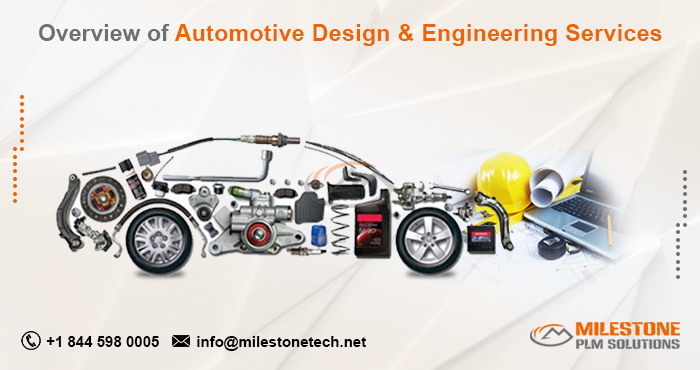Unveiling the World of Automotive Design and Engineering Services
In a fast-paced and highly competitive industry like automotive manufacturing, innovation is no longer just an option—it’s a necessity. The global demand for smarter, safer, and more sustainable vehicles continues to push the boundaries of automotive design and engineering. Amid this evolving landscape, companies are increasingly choosing to outsource automotive design and engineering services to stay agile, reduce costs, and tap into specialized expertise.
But what exactly does automotive design and engineering encompass? And why is outsourcing becoming the preferred model for many OEMs and Tier 1 suppliers? Let’s dive into the world of automotive innovation and explore how outsourcing is shaping the future of mobility.
What Is Automotive Design and Engineering?
Automotive design and engineering is a multidisciplinary process that covers the entire lifecycle of a vehicle—from conceptual sketches to production-ready models. It involves:
-
Exterior and Interior Design: Creating visually appealing, aerodynamically efficient, and ergonomic designs.
-
Mechanical and Electrical Engineering: Designing engines, transmissions, battery packs, wiring systems, and more.
-
CAD Modeling and Simulation: Developing 3D models, performing FEA/CFD analysis, and validating designs virtually.
-
Prototyping and Testing: Building functional prototypes and conducting rigorous safety, performance, and compliance tests.
With the rise of electric vehicles (EVs), connected cars, and autonomous driving systems, the complexity of automotive projects has significantly increased. This makes having the right technical talent and tools more important than ever.
Why Companies Choose to Outsource Automotive Design and Engineering Services
There’s a strategic shift underway. Rather than building large in-house teams, companies are choosing to outsource automotive design and engineering services to specialized firms. Here are some of the key reasons why:
1. Access to Specialized Expertise
Outsourcing partners often have a diverse pool of engineers, designers, and domain experts with deep industry knowledge. Whether it’s EV battery design, ADAS integration, or lightweight material engineering, they bring in niche skills that may not be available in-house.
2. Cost Efficiency
Building an internal R&D team with the necessary tools, licenses, and testing facilities can be expensive. Outsourcing offers a cost-effective way to manage projects without compromising on quality, especially during peak demand periods.
3. Faster Time-to-Market
Time is a critical factor in the automotive sector. Outsourcing firms operate with agile methodologies and global delivery models, allowing them to accelerate development timelines. This helps manufacturers bring innovative products to market faster.
4. Scalability and Flexibility
Whether it's scaling a team up during a new product launch or bringing in short-term consultants for a specific component, outsourcing allows businesses to remain flexible and responsive to market needs.
5. Focus on Core Competencies
By outsourcing non-core but critical tasks like simulation, CAD drafting, or wire harness design, companies can focus more on strategic decisions, branding, and go-to-market strategies.
Key Services Offered by Automotive Design and Engineering Partners
When you outsource automotive design and engineering services, you're not just offloading tasks—you’re engaging a strategic partner capable of delivering high-quality, end-to-end solutions. These services typically include:
-
Conceptual and Industrial Design
-
3D Modeling and Rendering (CATIA, SolidWorks, Creo, etc.)
-
Product Lifecycle Management (PLM) Integration
-
Electrical Wiring & Harness Design
-
Powertrain and Chassis Engineering
-
NVH (Noise, Vibration, Harshness) Analysis
-
Crash Simulation and Safety Testing
-
Reverse Engineering and Benchmarking
-
Tooling and Manufacturing Support
With these comprehensive services, businesses can confidently bring sophisticated vehicle models from the drawing board to the showroom floor.
The Future of Automotive Design: What Lies Ahead?
As the automotive industry pivots toward electrification, automation, and digitalization, the nature of design and engineering is changing rapidly. Key trends shaping the future include:
-
AI-Powered Design Tools: AI and machine learning are now being used to optimize vehicle aerodynamics, fuel efficiency, and design ergonomics.
-
Virtual Prototyping: Using digital twins and VR/AR to visualize and validate designs in real-time.
-
Sustainable Materials Engineering: Focus on recyclable and lightweight materials to meet global emission standards.
-
Over-the-Air Updates and Software-Defined Vehicles: Emphasizing the role of embedded systems and control architecture in design.
Outsourcing partners who stay at the forefront of these trends become valuable collaborators in future-proofing vehicle innovation.
How to Choose the Right Outsourcing Partner
Choosing to outsource automotive design and engineering services is a strategic decision that can deliver significant ROI—if you partner with the right firm. Here are a few things to consider:
-
Proven Experience in the Automotive Sector
-
ISO/AS Certifications and Quality Standards
-
Robust Data Security and IP Protection
-
Strong Project Management Capabilities
-
Ability to Integrate with Your PLM/ERP Systems
-
Positive Client Testimonials and Case Studies
Look for a partner who doesn’t just execute your vision but enhances it with innovation, collaboration, and precision.
Conclusion
The automotive world is evolving rapidly, and staying ahead demands more than internal effort—it requires strategic collaboration. When you outsource automotive design and engineering services, you’re not only reducing costs and accelerating development but also unlocking a world of innovation and expertise.
Whether you're designing the next electric SUV or refining the interior layout of a luxury sedan, the right outsourcing partner can turn your vision into a road-ready reality. In this dynamic landscape, outsourcing isn’t just a trend—it’s a smart move toward future mobility.



Comments
Post a Comment